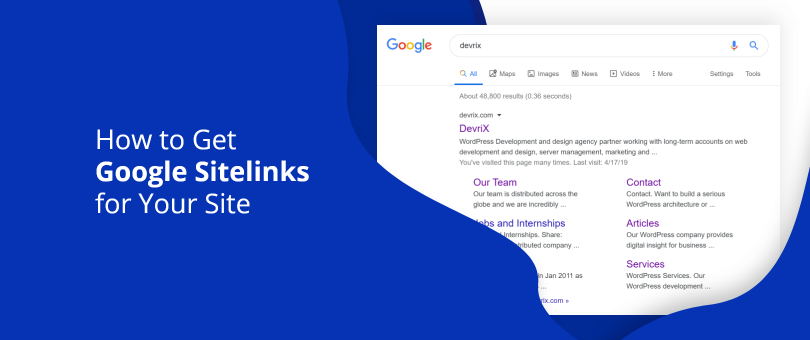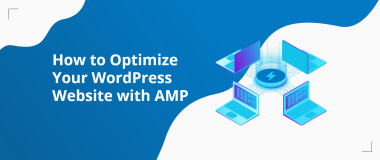If you go to Netflix’s homepage you’ll see the best shows are shown there. This is because these shows are the ones that fans love, search for, and watch the most. Therefore, they’ll always get the preferred position on the homepage.
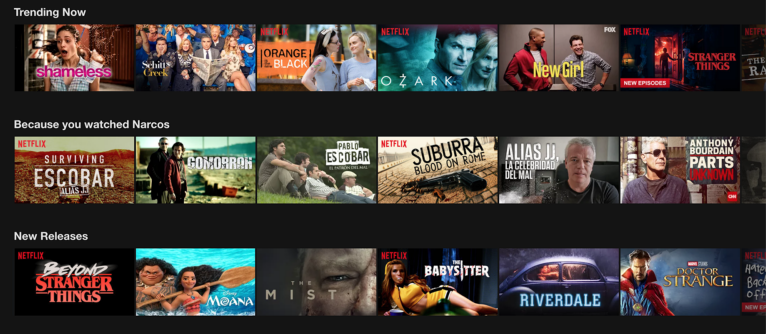
Source: Medium
This is exactly how Google Sitelinks work for your site. Google wants to display sitelinks that are most valuable and beneficial for the users.
Every site owner wants his top links to be prominently displayed in the search results. It’s what SEO dreams are made of. But what exactly are Google Sitelinks, how can you use them to improve your search rankings, and above all, how can you get them?
What Are Google Sitelinks?
Sitelinks is a Google sub-list that appears under the first search engine result for a given brand/company.
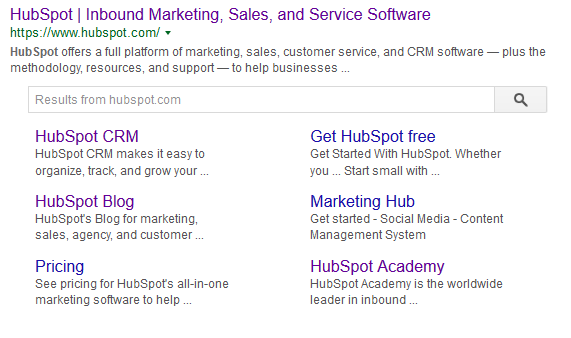
The main objective of Sitelinks is to help the users map-read your website. When someone searches “DevriX,” they may not be interested in the homepage. Perhaps they only want to go to our services page or our blog.
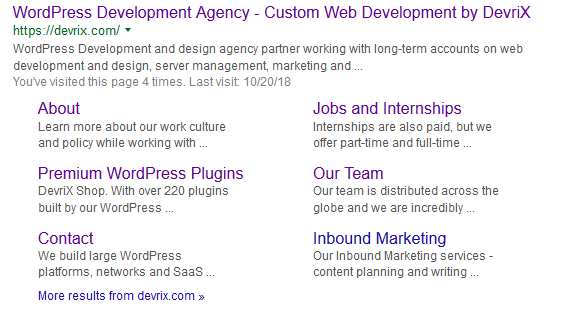
So they make the navigation process easier before the user even enters your site, and not to mention that the branded search engine result looks great. But the pages that will be displayed as Sitelinks is entirely up to Google. You can’t generate them yourself, because Google automatically places them in the search engine result.
This can be beneficial for your in-search CTR and for your web traffic. Sitelinks are also key when it comes to assessing the credibility of your website. When you see them in the search results, you know that Google checked the site thoroughly and trusts in those links.
But, there’s a catch – not every website gets its Sitelinks. If you have a poorly optimized site Google will not bother to display your “bestsellers.” As stated by the company:
“We only show Sitelinks for results when we think they’ll be useful to the user. If the structure of your site doesn’t allow our algorithms to find good Sitelinks, or we don’t think that the Sitelinks for your site are relevant for the user’s query, we won’t show them.”
According to the above, Google will disregard your website for the Sitelinks feature if the structure doesn’t allow the algorithm to check for good links and if they can’t connect users’ search queries to your Sitelinks.
Of course, you can’t really control what the user types into their search bar, but you can make an effort to show Google that your site is worth receiving Sitelinks.
Enhance On-Page SEO

Your chances to acquire Google Sitelinks will be much higher if your on-site SEO is on point. You’ll need to improve your content so that Google knows you’ve earned the clicks and impressions from the users and that your page deserves those sitelinks. Here’s what you need to focus your efforts on:
Titles and H1 Tags
The title, headings, and the subheadings are a vital part of your on-site SEO. They need to describe your content, have your main keywords included, and also, help users scan content.
Always use the H1 headline for your page title. This sends a strong signal to Google, it is easier for them to gauge what the page is about and connect it with the search query of the user.
Keywords
An effective on-page SEO strategy means that you need to use your keywords in the following ways:
- The page keyword must be included in the title tag. With that, search engines will understand what your page is about and why it is relevant to the search query.
- Include the keyword in your meta description. This increases the relevance of your content and it’s what the users see immediately after your link pops up in the search result.
- Your URL should include the main keyword too, preferably at the start of the slug. Make your URLs as short as possible, but still, incorporate the page keywords.
- Include the page keywords in the first 2-3 paragraphs of your page/post. Make sure that it is readable, and that it fits the context of your post.
- Don’t forget the ALT tag. It is the text of the image title that pops up when the cursor hovers over a photo. This practice also counts when search engine sites rank your pages and provide results during a search query.
- Don’t forget about keyword density. You need to use your keywords and branded keywords in a natural manner and avoid any sort of over-optimization and keyword stuffing. Always keep your keyword density between 1-3% across your post.
Cross-Linking
Cross-linking pages does not only increase website traffic, but it also improves your site UX. The links provide readers with an excellent source of information and keep them browsing on your website.
When searchers spend more time on your website, search engine sites will see this as a good signal, which will positively impact your search rankings and increase your chances of getting Sitelinks.
Mobile-Friendliness

Google uses mobile first indexing to determine your relevance in the search results. You’ll get the rankings that you deserve based on how good the mobile version of your page is. This applies to your site “bestsellers” too. A mobile-friendly website means that your site:
- Doesn’t use software that is not common to phones (Flash Player).
- Uses text that can be read without zooming.
- Auto-adjusting elements and content for different screen sizes.
- Links and buttons are at an appropriate distance so they can be easier to click.
For best feedback on your mobile design, check how mobile-friendly your website is with the Google Mobile-Friendly test and adjust accordingly.
Have a Good Branded Ranking
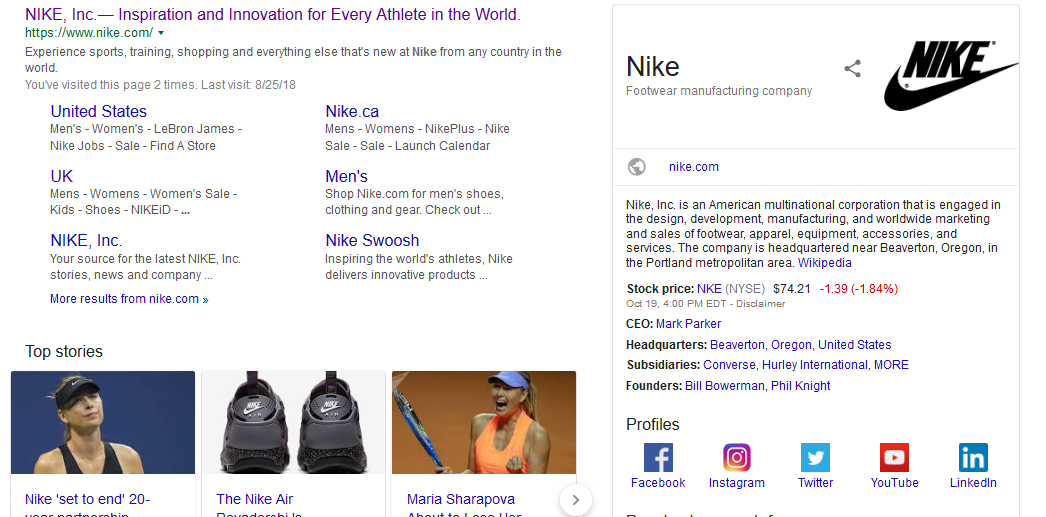
Because Sitelinks appear after a branded search query, you need to make an effort to rank for branded terms too along with the industry keywords that you target with your content. Besides providing immense value and offering an excellent product/service, you can improve your branded search ranking by:
Guest Blogging
When you guest post on an authoritative site, if allowed, you need to include your brand name and link at the end of your post or in the guest blogger bio.
Besides the obvious link building, SEO, and web traffic benefits, guest blogging can also increase brand awareness and grow your customer base. It is an excellent way to establish your brand online.
When you look for guest blogging opportunities, looks for sites that:
- Belong to Your Niche
- Have a Well-Segmented Target Audience
- Have a High Engagement Rate (Shares, Likes, Comments)
- Accept Guest Posts
If you want to increase your brand signals through guest posting, make sure that you’ll guest post to a site that has a high authority.
Getting Social Media Mentions
Social media mentions are the number of times that your brand is shared, tagged, or mentioned on social media platforms. The more mentions you get, the bigger your brand and content reach is, and in turn, you’ll increase your chances of Google recognizing your branded signals and providing you with sitelinks.
These @Nike ads remain undefeated. https://t.co/9BV4enBZYO
— Complex (@Complex) October 20, 2018
Plan your content and have a different strategy for each social media channel. It’s not enough just to post your content, you need to know how to engage with your fans and how to invite them to take action through your posts.
Ask questions, reply to comments, start a discussion, and conduct a poll, a contest. Think about your target audience and what do they want to see on social media. Share content that makes you stand out and that inspires your audience at the same time.
Being Interviewed
To increase brand awareness, you can use platforms such as HARO where journalists can find you to conduct an interview about a given topic. HARO is different from the guest posting because, on this platform, journalists contact you.

When a journalist reaches out with a topic, make sure that you showcase your authority and expertise, but at the same time, stay polite and be polite when you reply. Above all, be certain that you can answer each question. It would look bad for your brand if you provide false and untrue answers. Only answer the questions that you’re qualified to answer.
Have a Clear Website Structure

Source: Jess Marks Photography
How’s your website structure? Is your website navigation on point? This is important not just for users, but for search engine crawlers too because Google uses your site navigation to create your search engine index. The tips below will ensure that your website navigation is on point:
Utilize Breadcrumbs
No, we are not talking about “Hansel and Gretel”. According to Hongkiat, breadcrumbs :
“Give users an alternative method of navigation, allow them to see where they stand in the hierarchy of a website.”
Or a digital trail of the page that users browse within the hierarchical structure of your website. For example:
Homepage -> Blog -> How to Get Sitelinks for Your Site
If you use WordPress as your CMS, make sure that you have the Breadcrumb NavXT plugin that can help you generate your breadcrumbs.
Add XML Sitemap to your Google Search Console
One of the best ways to help Google crawl your site is to have a sitemap submitted to the Search Console. Log into your Search Console account, click on your website, go to “Sitemaps”, and add the location of your sitemap.
If you use WordPress and you don’t have a sitemap, a plugin called Google XML Sitemaps can help you create one and keep it up to date.
Simpler Navigation
Don’t give users a headache by showing them tons of menus, submenus, and buttons. Instead, offer the standard menus and their subcategories in drop-down menus:

Source: Playstation
With this, your website hierarchy will be on point, and you’ll offer a much cleaner UX.
Wrapping Up
Google Sitelinks can definitely make a difference to your online presence, in terms of click-rates, branding, better search rankings, and acquiring more traffic. They’re not something that you can create yourself, they’re not mandatory, but they definitely come as a result of a quality content and link building strategy.
Bottom line, it is far better to have Sitelinks come up for your brand after a search query than having just links that are spread around the SERP. Hopefully, with our advice, Google will recognize your brand and provide you with your own “Netflix” version of SERPs.
